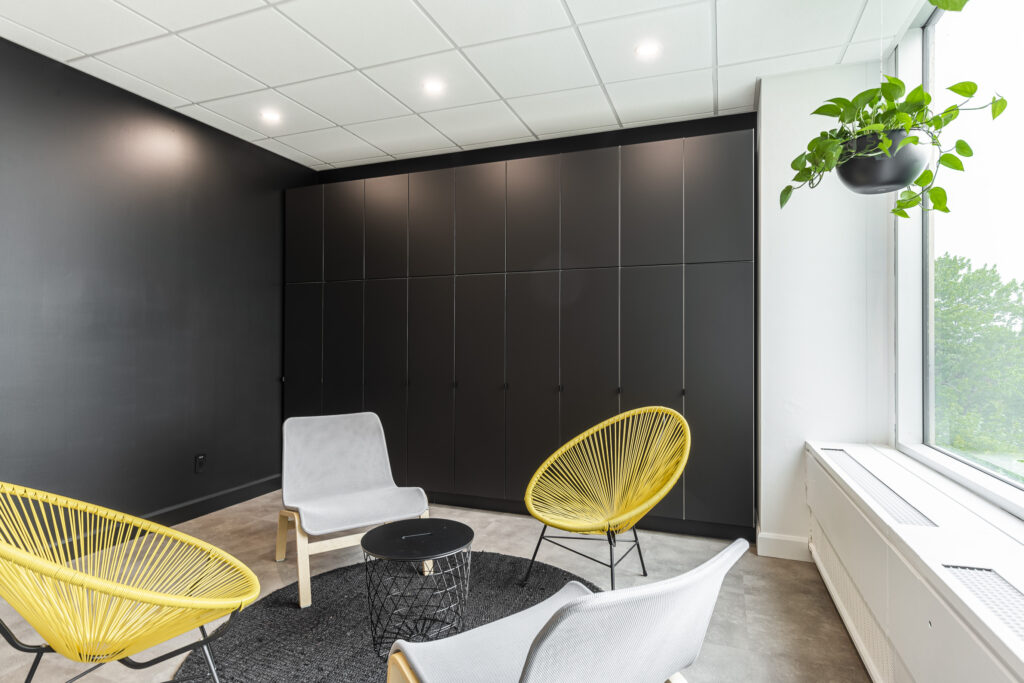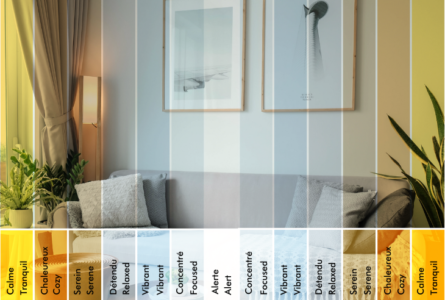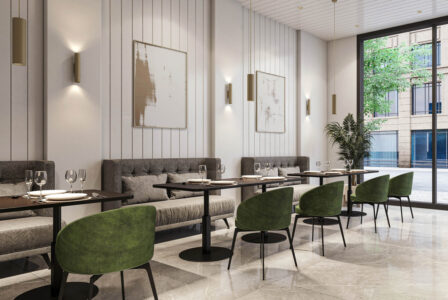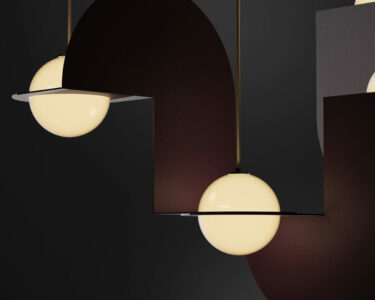Lighting basics you should know to jumpstart your project
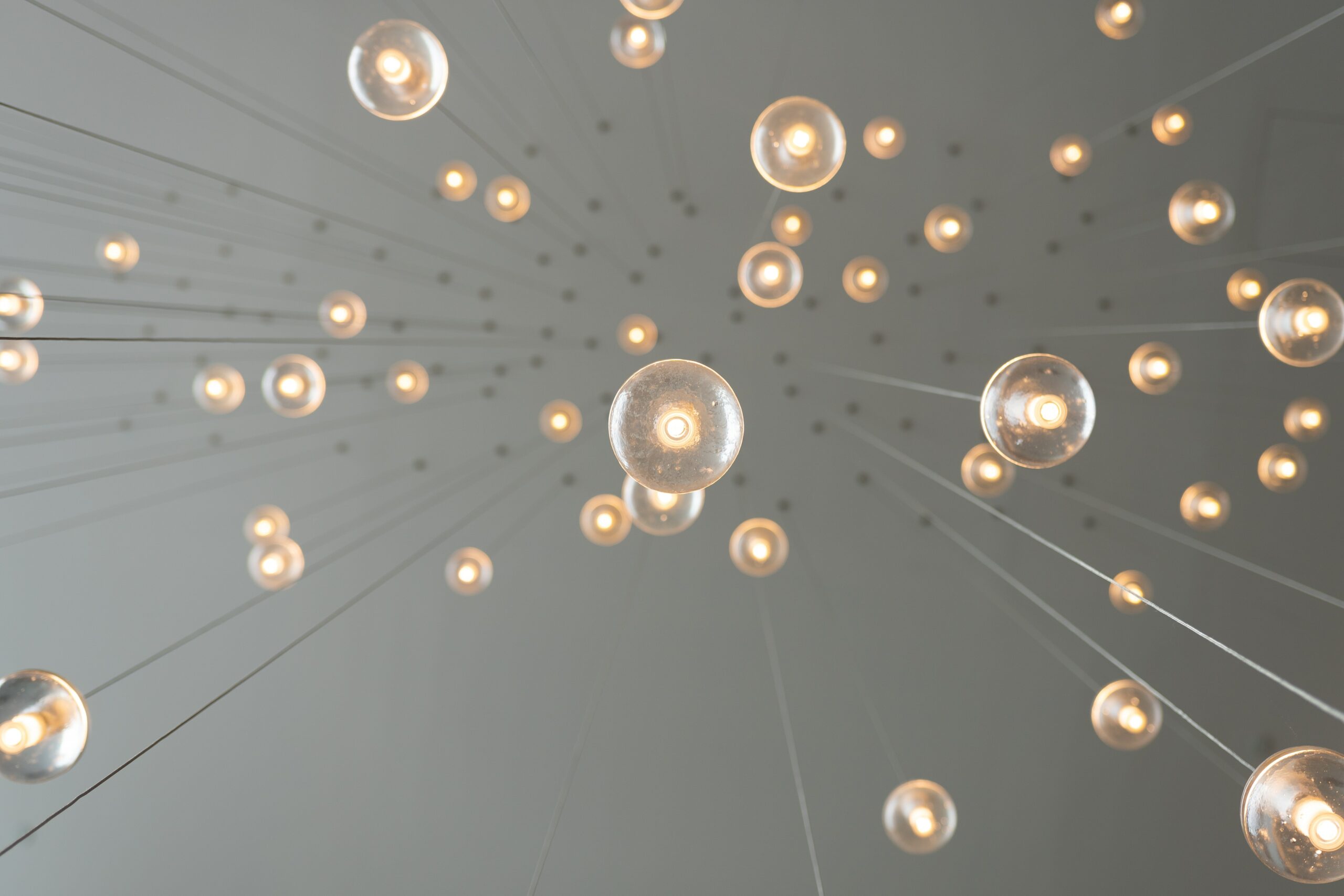
Lighting basics you should know to jumpstart your project
Light as we understand it is radiation with a wavelength between 380 and 780 nanometers; the different colors correspond to the various wavelengths in that spectrum (Royal Philips Electronics of the Netherlands, 2008).
The proper use of lighting, no matter the nature of the space, can increase productivity, attract more potential customers, and even increase sales as well as buyers’ and employees’ satisfaction.
Are you still uncertain about the importance of lighting?
Lighting can play a key role in the design of a space, as it not only complements the décor, but also sets an ambiance, and can even influence the overall mood and state of mind of those who walk through the space.
Achieving the desired effects and meeting your lighting objectives involves building a plan. In this article, you will learn all the basics you need to consider in order to succeed.
As you prepare to buy a lighting fixture, you will find two primary lighting technologies on the market: incandescent (and its variants) or LED.
The incandescent kind is the oldest, powered by a thin, high-resistance wire located inside, converting the energy into heat until the light is generated.
LEDs (light-emitting diodes), on the other hand, entered the market more recently, they transform energy directly into light resulting in lower energy consumption than its counterpart (up to 80% less!), making them more energy-efficient. In addition, they have a longer lifespan than incandescent bulbs, in some cases up to 20 times longer than incandescent bulbs.
Bearing this in mind, it is important to mention that, naturally, LEDs may come at a higher price point compared to incandescent lights, but in the face of significantly superior performance. However, not all fixtures are compatible with LEDs, and mishandling them can lead to them burning out or not performing at their best. In order to prevent this from happening, always keep this in mind and remember to carefully review the product specifications or ask for help: as lighting professionals, we can advise you.
To complement your purchasing decision, you should also consider the following light specifications:
![]()
Volts
This is the electrical voltage. It corresponds to the energy that runs through a conduit. In Canada, the most common voltage is 120, although 347V can be found in larger areas. It is very important to verify the voltage at the location for which the lighting is intended, as if it does not match the voltage required by the fixture, it could burn out.
![]()
Watts
It is the energy required to power electrical devices, i.e., it is the energy that they consume and, therefore, the one that increases the energy bills. It is a common misconception that the higher the number of Watts, the brighter light the source emits. However, the real credit for this goes to the Lumens.
![]()
Lumens
Is the amount of light emitted by a source, something that is often misconceived as corresponding to watts. It is likely that this confusion is due to the way incandescent bulbs work, which, the higher the watts consumption, the more light they manage to generate. However, LEDs require less energy consumption to produce light.
![]()
Lux
Lux refers to the amount of light on a surface, and it is important to take it into account to ensure that the selected light is really the most suitable for the different activities that will take place in the space in which it will be installed. The lighting required for a gym will not be the same as that for a car dealership or for a supermarket.
![]()
Correlated Color Temperature
This term might be more familiar to some of you. Color temperature indicates whether the light is in the more yellow (warm) or blue (cool) spectrum. Different levels of CCT help create an ideal ambiance for different spaces, making it, for example, more welcoming with a warm tone, or facilitating concentration with a cool tone.
![]()
Color Rendering Index
Colors can vary from one place to the next, and this is due to lighting as it can alter color perception. This is what CRI measures: the way colors look under sunlight versus how they look in artificial light. So, as you might well suspect, this is of greater importance in a supermarket than in a gym, for example, in order to highlight the products’ colors and freshness.
In addition to the aforementioned characteristics, lighting fixtures can be classified by function and mounting type.
Function:
Here is a brief summary of the different lighting options and styles
Lighting Mounting Options
Ambient Lighting
This is the overall illumination of a space, extending to all areas. It can also be referred to as general lighting.
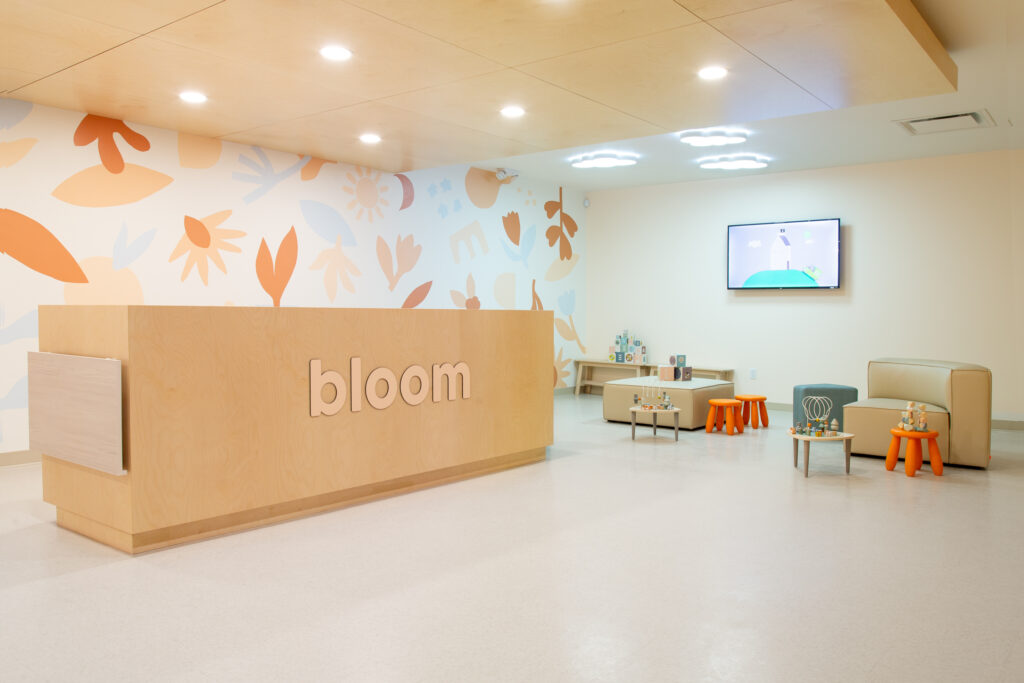
Task Lighting
Perfect for facilitating specific tasks in every space. Intended to increase focus in spaces where meticulous tasks are performed, whether it’s reading or even production.
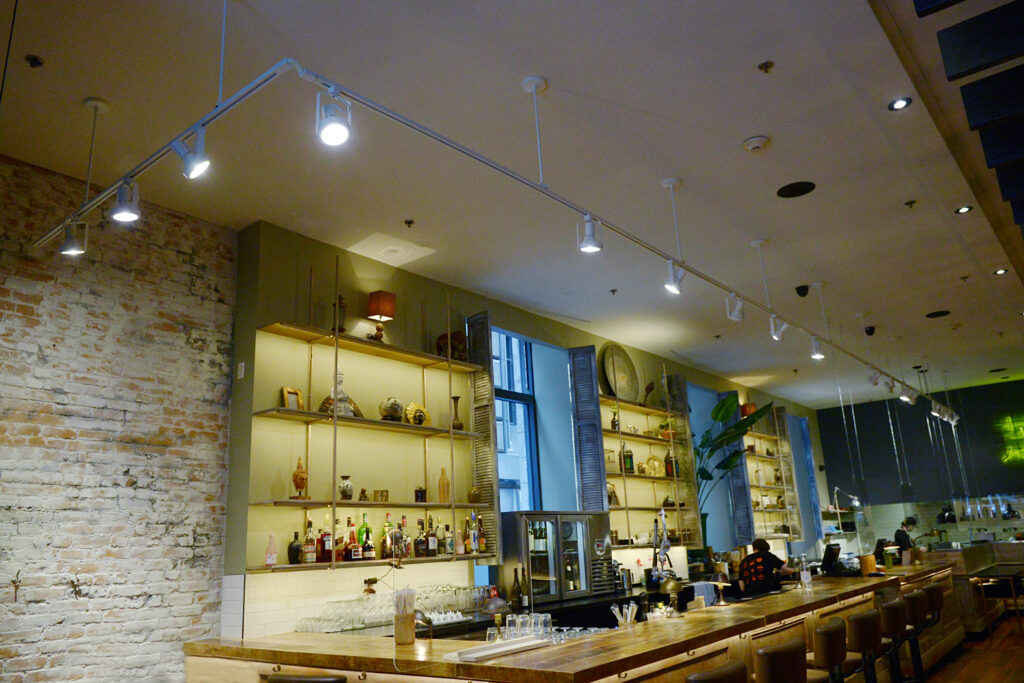
Sesame Restaurant Old Montreal
Accent Lighting
If you want to highlight a specific object or spot, accent lighting will be your best ally. It stands out from ambient lighting to draw attention to strategic points.
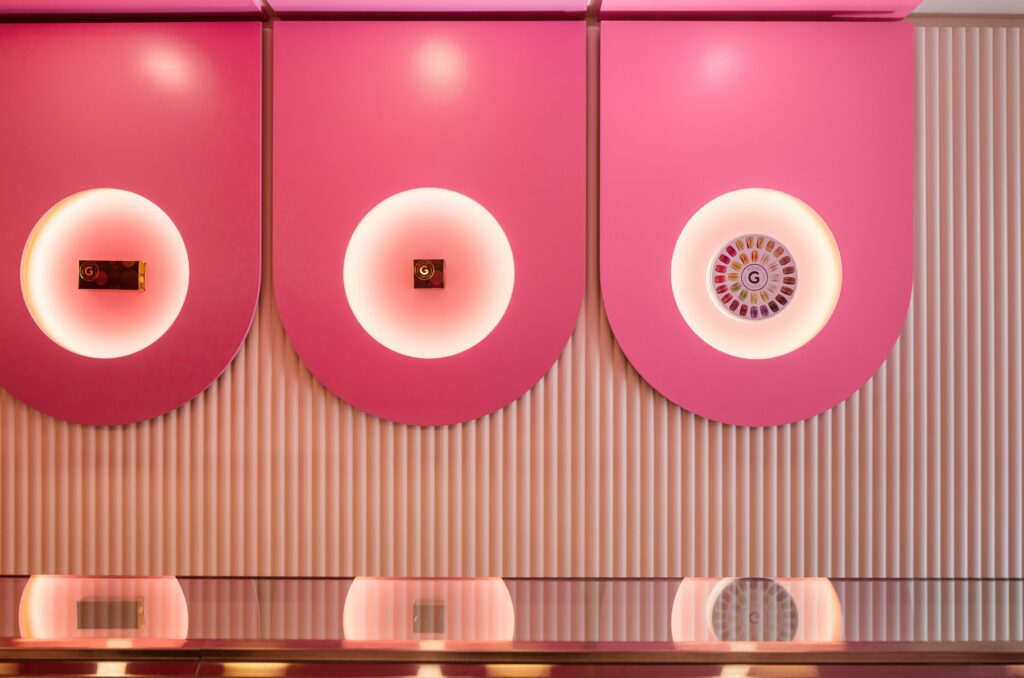
Decorative Lighting
In addition to a successful performance, it is also necessary for the chosen fixture to both be beautiful and well suited to reinforce your brand’s personality.
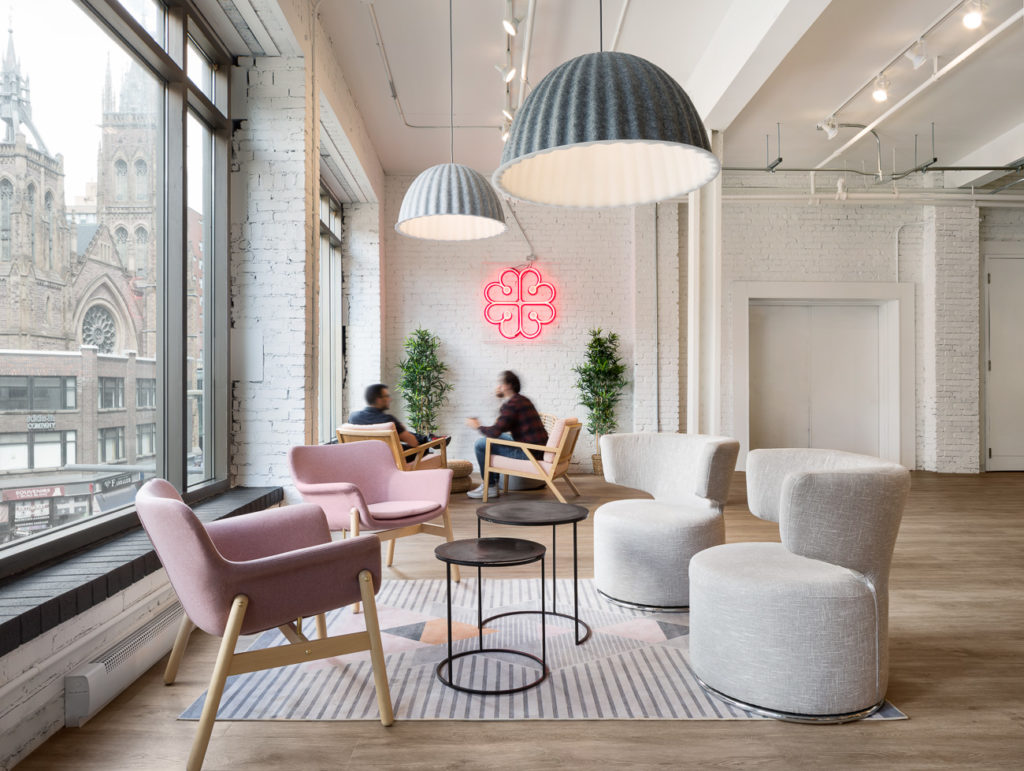
To learn more about the subject, refer to our complete article: What are the different types of lighting?
Mounting Options
You must choose the most functional way to mount your luminaires according to the space for which the lighting is being planned. This will also determine the light’s directionality.
Following are the most common mounting options
Surface Lighting
This is a mounting system that allows the fixture’s frame to be visible on the surface on which it is installed, whether it is a wall or ceiling.

Valmont Supermarket
Recessed Lighting
In contrast, this mounting hides the entire housing underneath the surface, leaving only the light source visible.
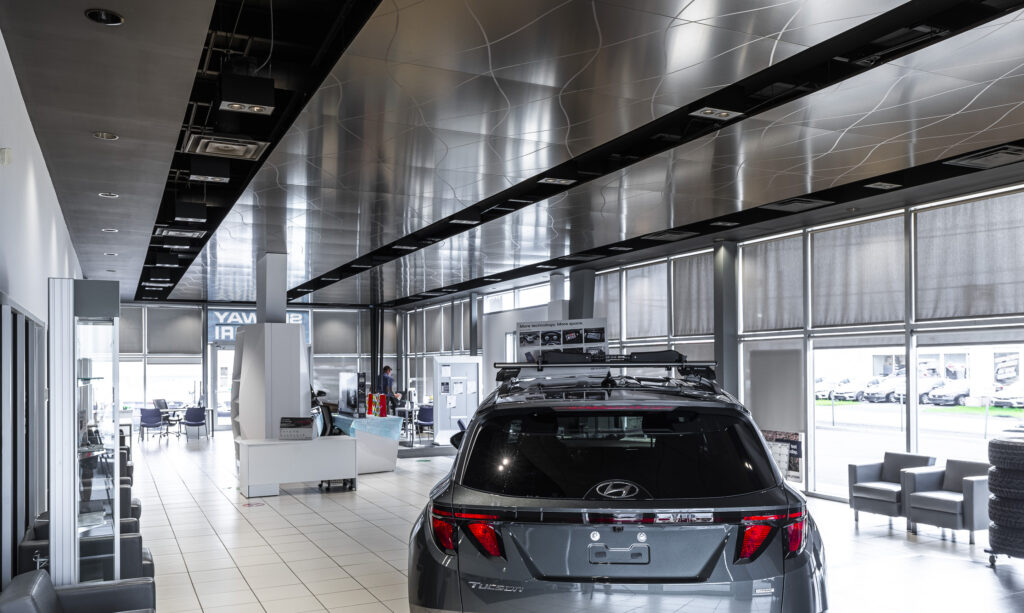
Suspended Lighting
Hanging from the ceiling, suspended lighting is usually sustained with wires. This type of mounting is particularly ideal for high ceilings.
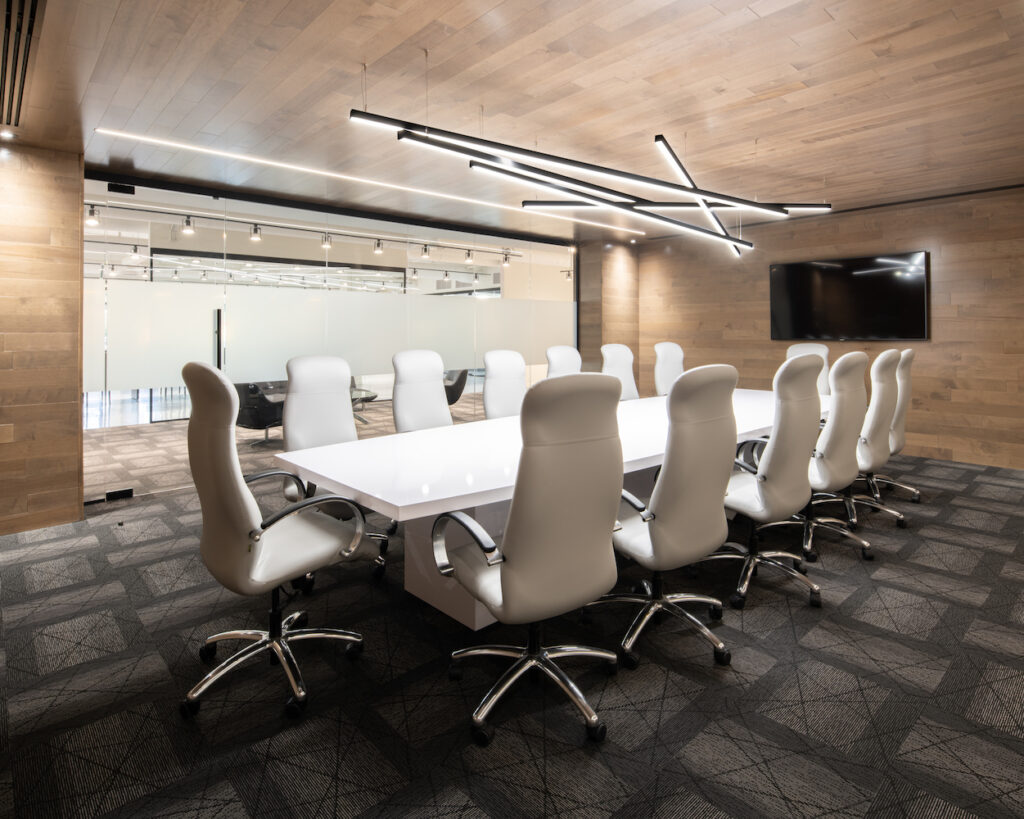
Here are some ideas on how to get started with your next lighting project.
Get inspired and let us walk you through the process.
